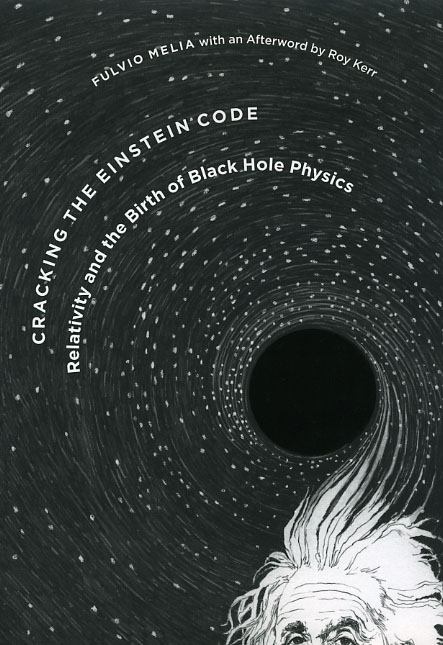Press Release: Melia, Cracking the Einstein Code

Because Albert Einstein’s equations so accurately describe the world around us, they seem timeless. But in truth, we have only understood how to apply his theory of general relativity for less than fifty years. When Einstein published his description of the effect of gravitation on the shape of space and the flow of time in 1916, few scientists knew what to do with it. Enter Roy Kerr, a twenty-nine-year-old Cambridge graduate who solved the great riddle in 1963. The solution he proposed emerged coincidentally with the discovery of black holes that same year and provided fertile testing ground—at long last—for general relativity. Today scientists routinely cite the Kerr solution, but even among specialists few know the story of how Kerr cracked Einstein’s code.
Part biography, part chronicle of scientific discovery, Cracking the Einstein Code unmasks the history behind the search for a real-world solution to Einstein’s field equations. Offering an eyewitness account of the events leading up to Kerr’s great discovery, Fulvio Melia vividly describes how luminaries such as Karl Schwarzschild, David Hilbert, and Emmy Noether set the stage for the Kerr solution; how Kerr came to make his breakthrough; and how scientists such as Roger Penrose, Kip Thorne, and Stephen Hawking used the accomplishment to refine and expand modern astronomy and physics. Today more than 300 million supermassive black holes are suspected of anchoring their host galaxies across the cosmos, and the Kerr solution is what astronomers and astrophysicists use to describe much of their behavior.
Sometimes dramatic, often exhilarating, but always attuned to the human element, Cracking the Einstein Code is ultimately a showcase of how important science gets done.
Read the press release. Also read an excerpt from the book.